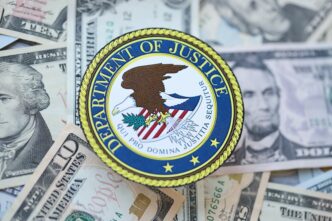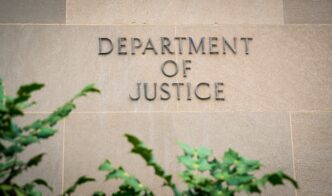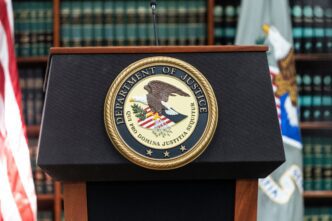Carrying a tall wooden cross on his shoulder, Pastor John Shaver walked along the street where the Community United Methodist Church of Pacific Palisades once stood. The 102-year-old church, which Shaver had led for just six months, was destroyed in a wildfire this past January that severely damaged the community. On Good Friday, Shaver and several community members gathered at the church’s ruins amidst the noise of forklifts and jackhammers preparing the site for rebuilding.
They embarked on a Good Friday “cross walk” from the church to the bluffs overlooking the Pacific Ocean, pausing at nine locations to read a Bible verse at each stop. This was a slight departure from the traditional 14-step devotion commemorating Christ’s suffering, crucifixion, and death. Each station represented an event from Jesus’ last day, from his condemnation to his burial. While the congregation had been holding Sunday services at alternate locations, this marked the first return to the church site after the fire, which left nearly 80% of the congregation, including Shaver, homeless.
Church member Christine Odionu visited her burned-out condo, noting that only the garage remained. With tears in her eyes, she expressed the pain of the occasion, calling it a day of mourning despite Easter’s promise of hope. Annette Rossilli, a longtime church member, was among the 29 individuals who lost their lives during the wildfires that struck the Los Angeles area on January 7, fueled by dry conditions and strong winds.
Shaver reflected on Rossilli as the group walked, pausing at the site where his own house once stood. He, his wife, and their two daughters had moved into the home just months before the fire. Taking a moment to remember the family heirlooms lost, Shaver remarked on the things often taken for granted. In a gesture of gratitude, he wore clothes donated to him after the disaster.
On Good Friday, Via De La Paz, the street housing the church property, was bustling with construction activity. Despite the work, an eerie atmosphere lingered, with charred palm trees and remnants of destroyed buildings. Amidst the wreckage, homeowners displayed signs with messages of hope and rebuilding, including some that read, “This home will rise again.” Palisades Elementary Charter School, located opposite the church, offered a message of resilience: “Pali will rebuild.”
Thomas Knoll, a neighbor who also lost his home, attended the event despite not being a church member or religious. He likened the gathering to a funeral for Pacific Palisades, noting the appropriateness of the crucifixion and resurrection theme for the town’s recovery process.
The church, which celebrated its centennial in 2022, played a foundational role in the community’s history. Established by Methodist church planters inspired by the Chautauqua movement, it provided cultural and social programs to residents. Despite the losses, Shaver noted the salvage of some items, including ceramic mugs, tiles, and a significant metal cross. Plans are underway to incorporate these elements into the church’s rebuilding.
Before the walk, Adriana Ruhman sifted through debris searching for a ceramic tile featuring her children’s handprints made a decade ago. Finding it brought her a sense of hope amidst the loss of family mementos.
Mary Katherine Breland, who resides in Los Angeles, attended the church for its welcoming community atmosphere reminiscent of her Alabama roots. Returning for the first time since the fire, she emphasized the importance of coming together during Easter to reflect on the past and embrace new beginnings.
This Good Friday marked the church’s inaugural cross walk, a tradition Shaver hopes to continue. As they reached the bluffs, a sign indicated “End,” but the group proceeded to take in the panoramic view of the Pacific Ocean. On Easter Sunday, they planned to join Westwood United Methodist Church for services. Shaver reassured the congregation that despite the sign, the fire did not signify an end, but rather the start of a beautiful future.
The cross, bare on Good Friday, would be adorned with fresh flowers on Easter Sunday, symbolizing the congregation’s rebirth and renewal.






